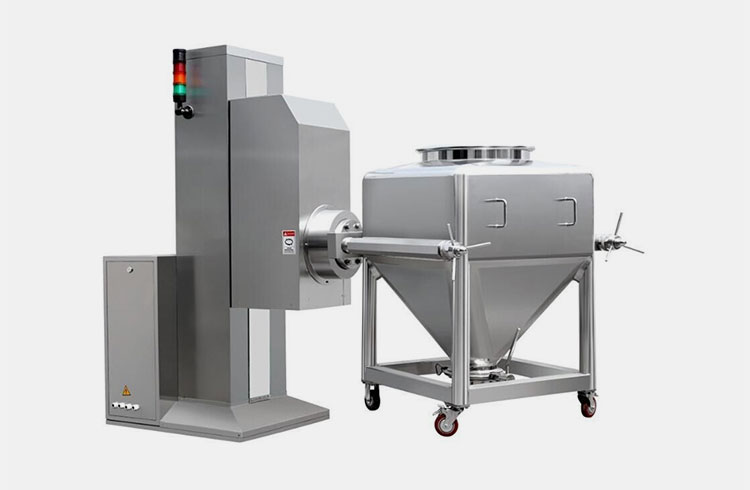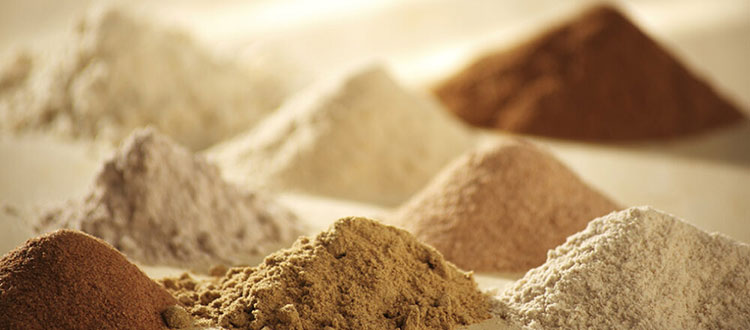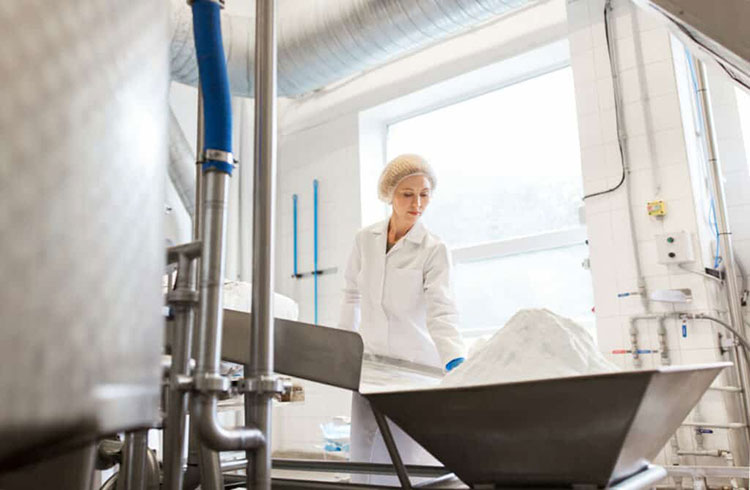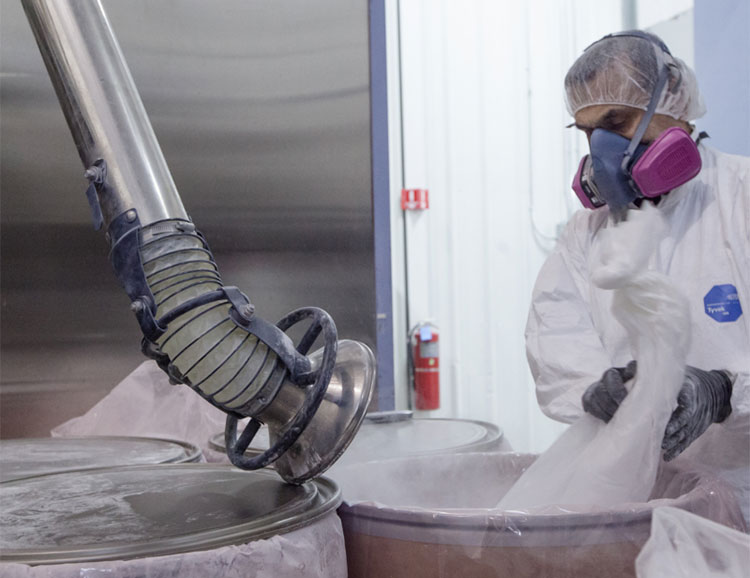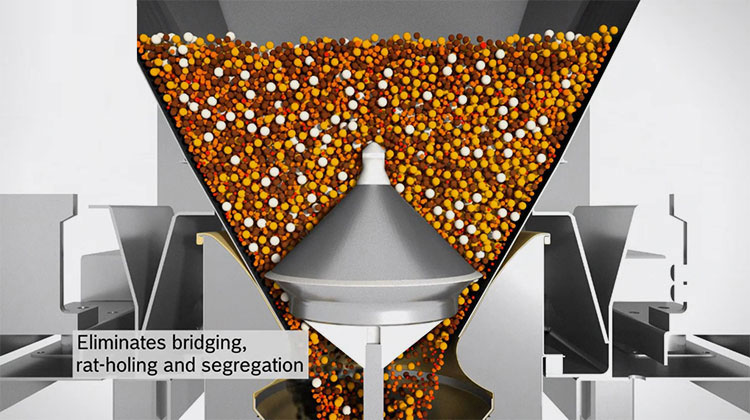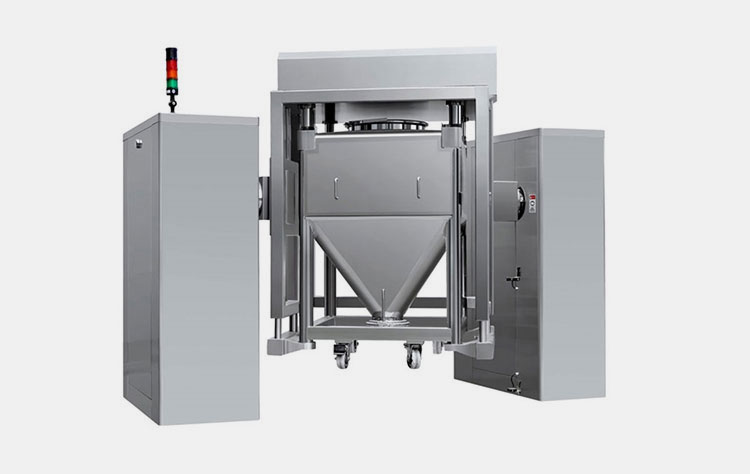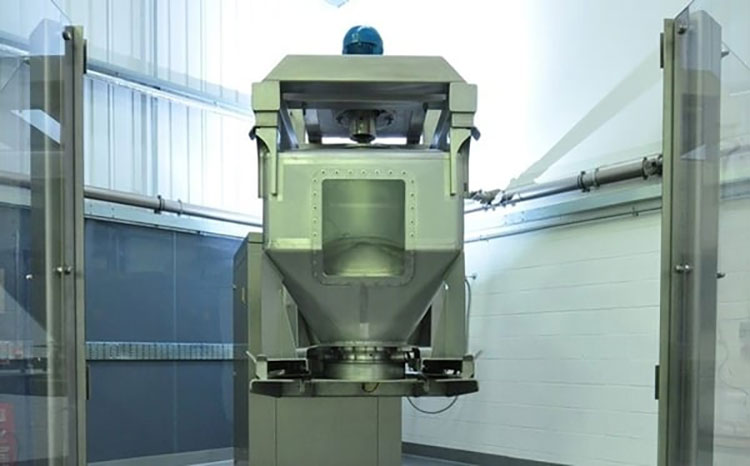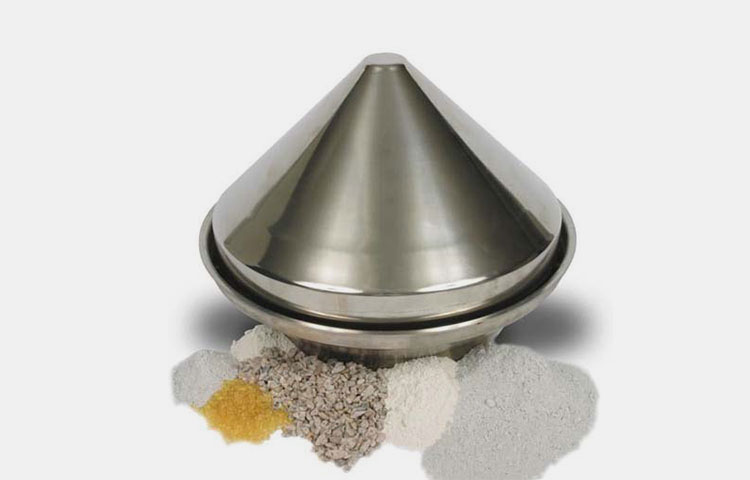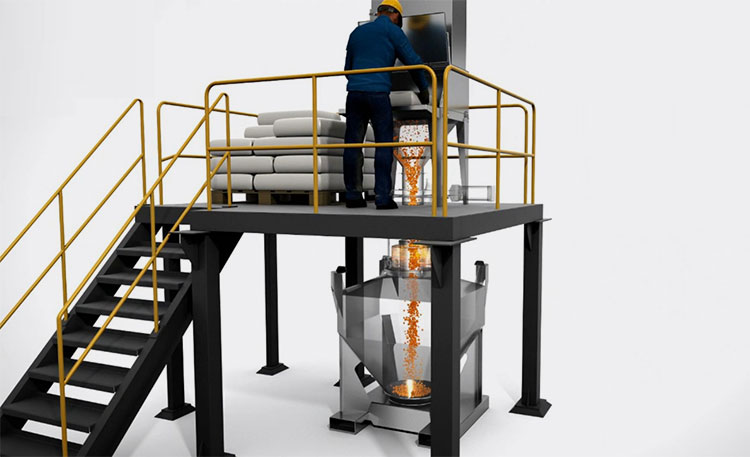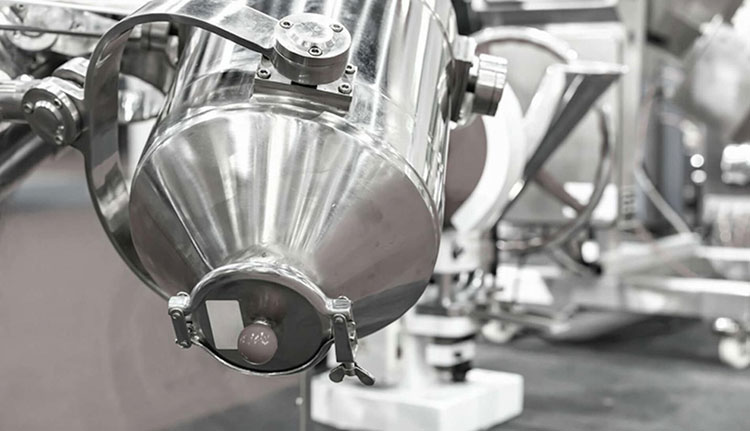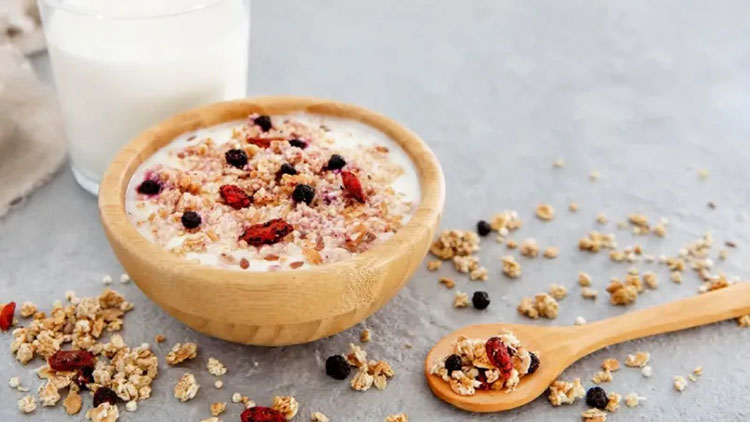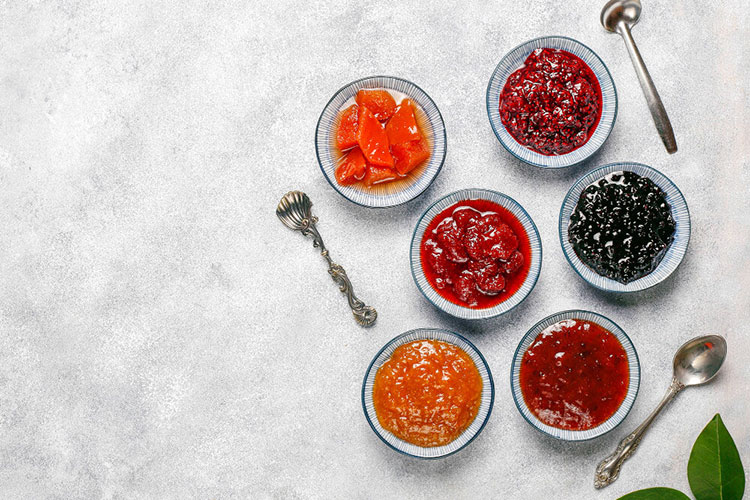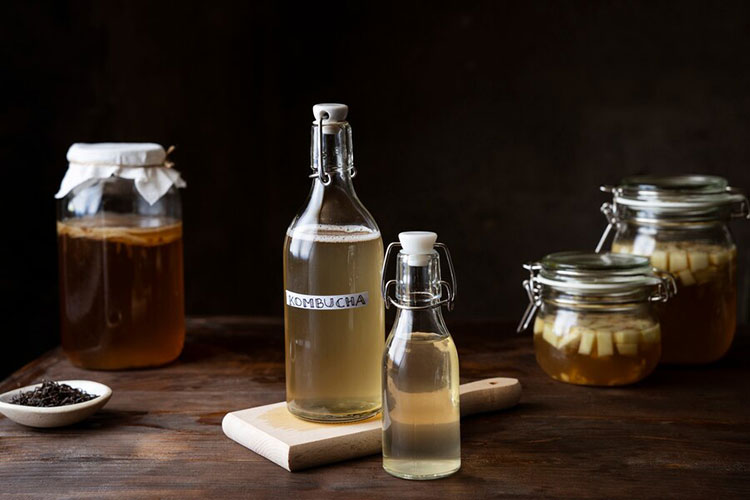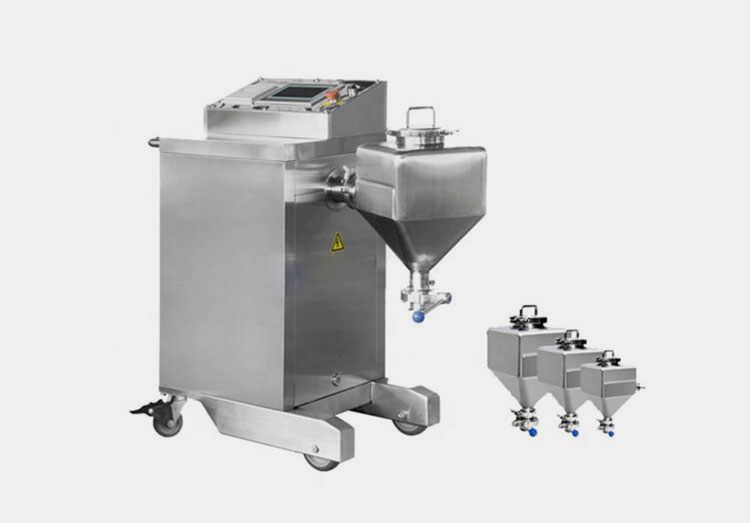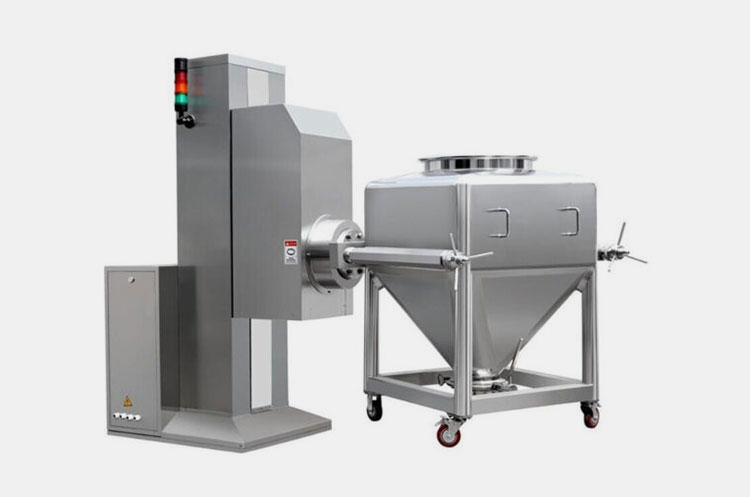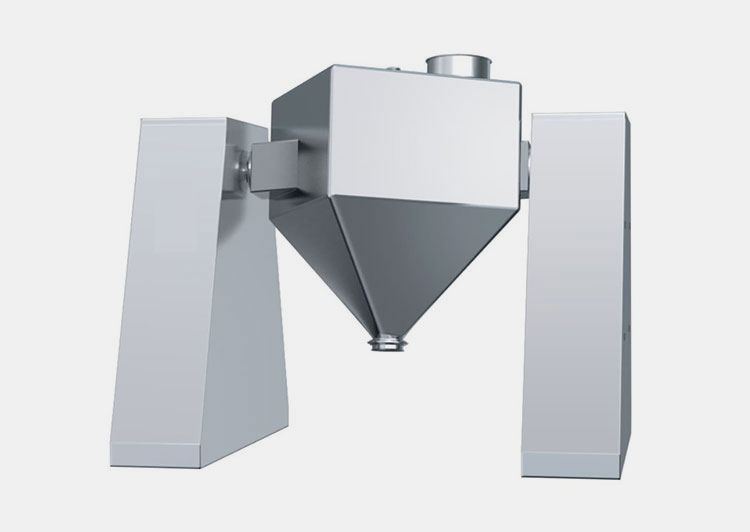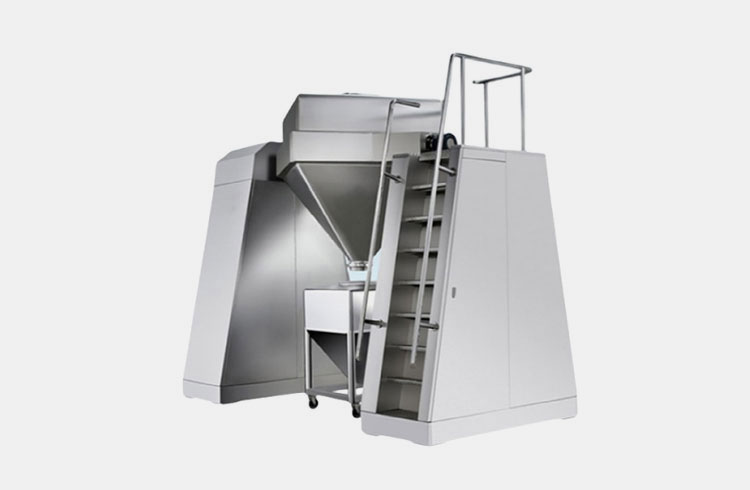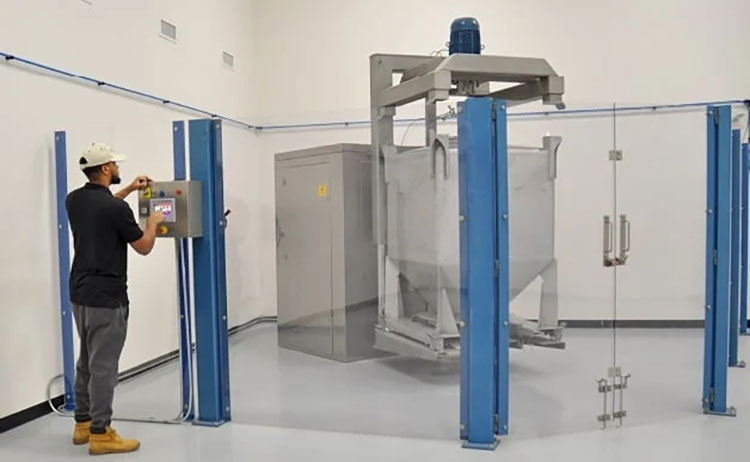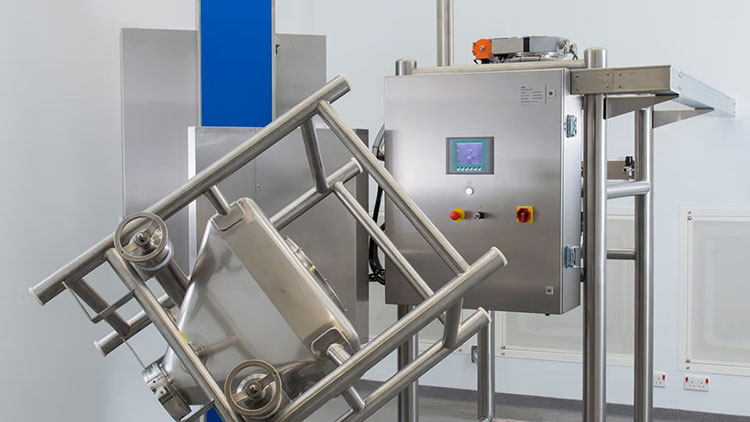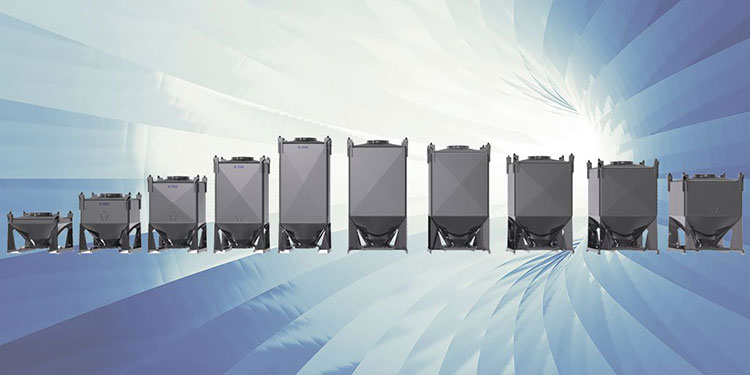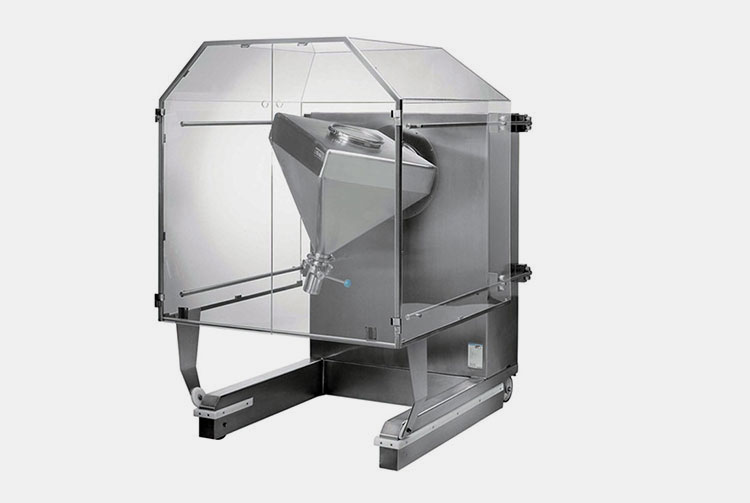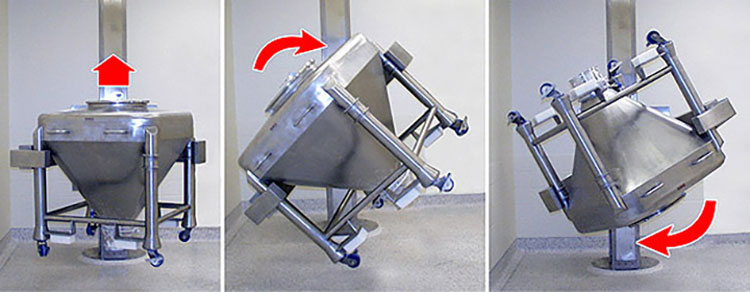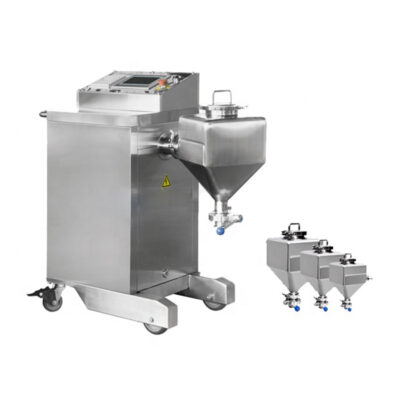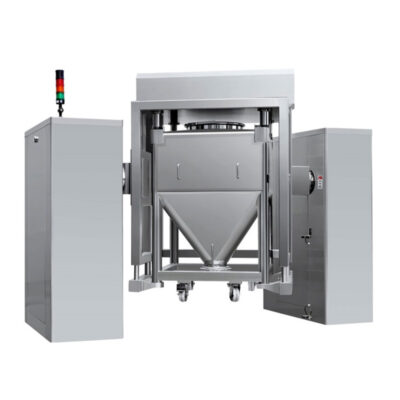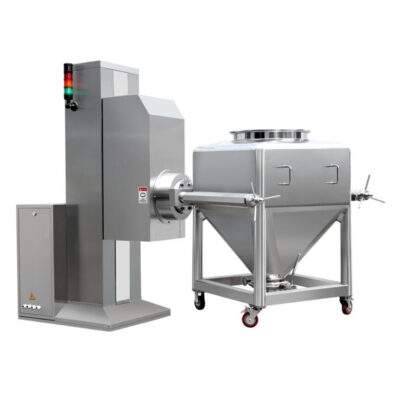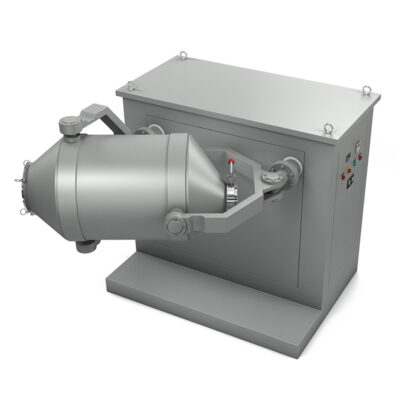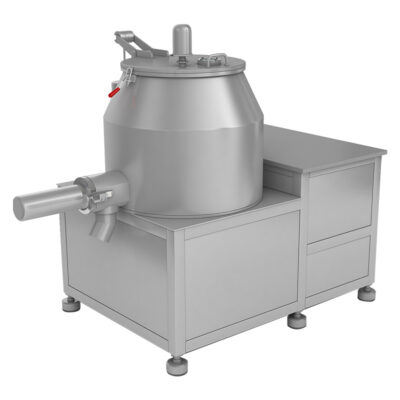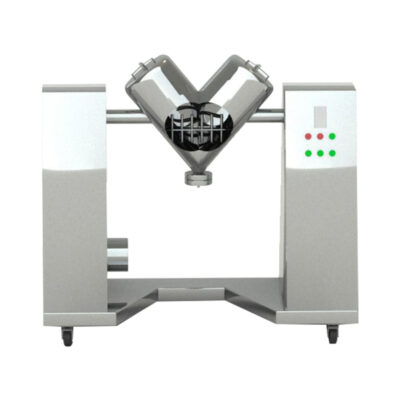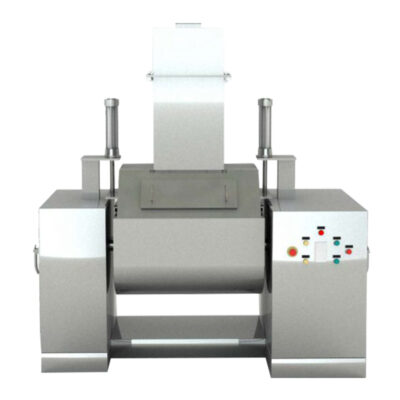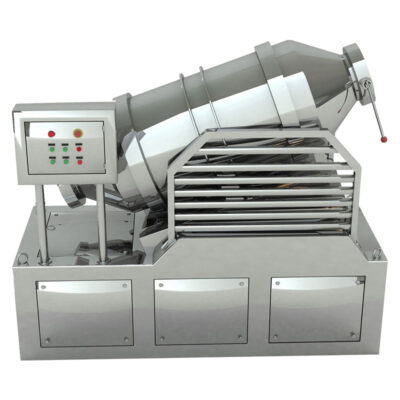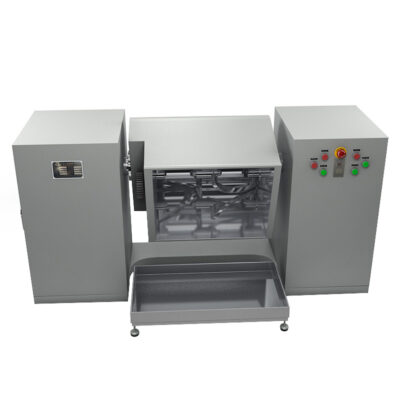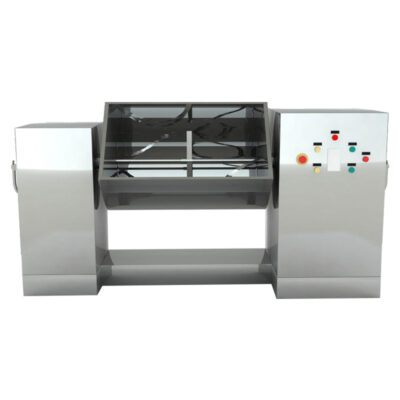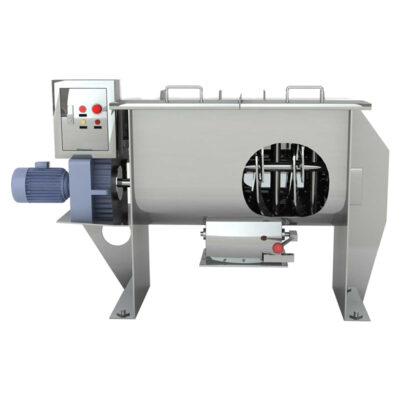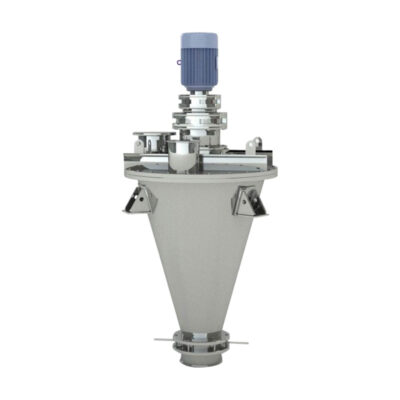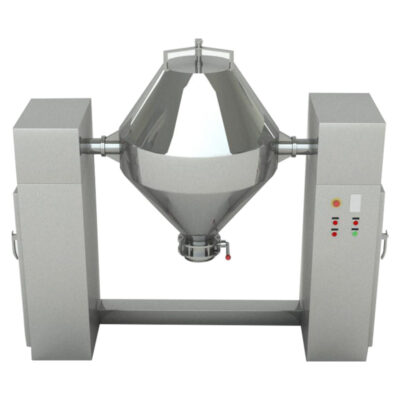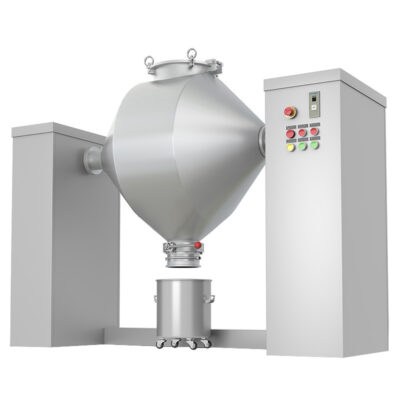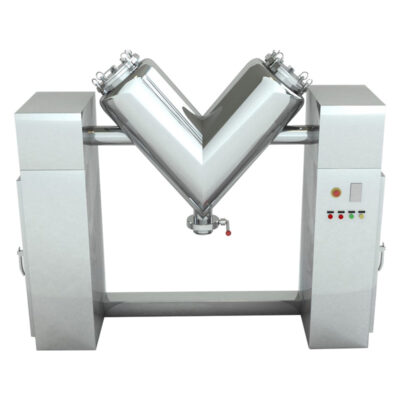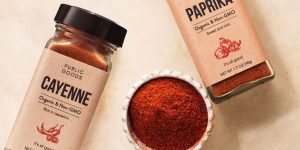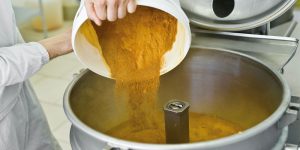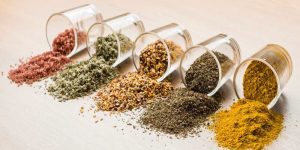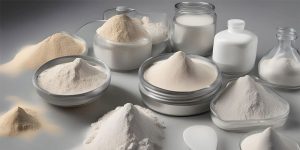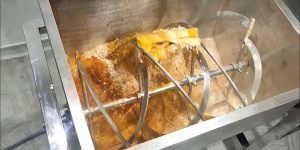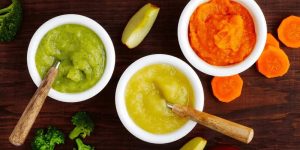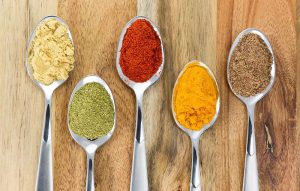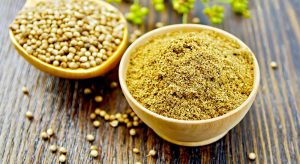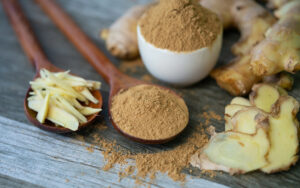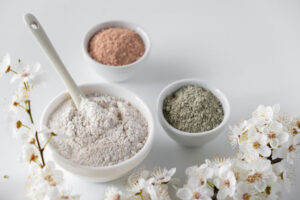12 Key Questions To Ask Before Buying a Bin Blender
Do you want harmony in your blend? Are you interested in acquiring a consistent and fully mashed blend? Then don’t go looking for the wrong bin blender and carefully jot down your specifications before going to the market or manufacturer's website.
The selection process for the bin blender is not about ticking every box on the spec sheet. It is a deliberate decision that makes or breaks your product quality, batch reproducibility, and operation success. The options of bin blenders in the market overwhelm even an expert businessman. So how can you ensure that your pick matches your process capabilities and needs?
Well, to facilitate your decision-making process, we have put together this informative blog post “XII Key Questions To Ask Before Buying a Bin Blender”. The information presented in this written piece will help you in navigating this challenging task head-on. Let’s blend knowledge with real-world utility.
1.Is a bin blender suitable for your ingredients?
Are you blending powders differing in their particle sizes or densities? Do your powders have poor flowability? If the answer to any or both of the questions is yes, then it is suggested to look for a bin blender with advanced capabilities. Here are a few points to consider while deciding:
Variability in Particle Size Range
Variability in Particle Size Range- Picture Courtesy: AVEKA
This issue poses a huge set of problems during and post-blending. However, manufacturers of bin blenders boast that they can handle anything- from fine powders to extremely large granules. Still, it is best to opt for solutions with advanced blending mechanisms, for example, tumbling or orbital motion.
These movements create a dynamic surrounding inside the vessel, which drives the interactions and contacts between powder particles, leading to smooth distribution and batch repeatability regardless of size variabilities.
Heavier and Lighter Powders
Heavier and Lighter Powders- Picture Courtesy: Bulkinside
You can have powders in three kinds of bulk densities- loose, packed, or fluidized bulk densities. Hence, blending powders with heavier and lighter densities is a challenging task, often causing segregation. This matter is easily overcome by selecting a high-performance bin blender. Indeed! This machine has been devised to control this problem by entirely mixing powders with tailored rotational speed and movement patterns.
This enables you to homogenously distribute compact and non-compact powders in the blend.
Managing Sticky or Free-flowing Powders
Managing Sticky or Free-flowing Powders- Picture Courtesy: Powder & Bulk Solids
Occasionally, you have to process powders with sticky or cohesive attributes and poor fluidity. What to do in this case? Well, pharmaceutical manufacturers advise getting bin blenders with the latest capabilities, for instance, anti-stick surfaces or changeable revolution rate to attain smooth blends. On the other hand, you can incorporate a bin blender with a specialized design to prevent over-mixing of free-flowing powders.
2.Does bin blender accompany an anti-segregation design?
Manufacturers frequently deal with sensitive powders in pharmaceutical, chemical, or cosmetic industries. And these powders should be handled with fineness, so as not to compromise the efficiency and reproducibility of the blend in any way or form. Subsequently, a bin blender with a customized design is best for the job.
Anti-Segregation Design
Anti-Segregation Design- Picture Courtesy: Tinsley Equipment Company
Segregation of powders normally impacts the quality of the blend and results in equipment blocking. So, it is a no-go for any manufacturing. This problem is offset by using a bin blender with carefully devised vessel movements, like axial or radial mixing. By this, you can acquire a smooth dispersal of powders with no chance of stratification.
Use of Vacuum or Inert Gas
Nowadays, a bin blender is integrated with features, for example, inert gas purging or operativity in vacuum vacuum-sealed environment. This unit is ideal for processing oxidation- or moisture-sensitive powders. Removal of oxygen or water vapors from blending utilizing these options safeguards sensitive powders from external environmental agents.
Accessible Discharge Systems
AIPAK V-Bottom Bin Blender
Now, you can have new discharge systems in a bin blender like V-bottom unloading, conical discharge, or rotary valve offloading. Isn’t great! You can conveniently offload blended material with gravity assistance. These discharge systems feature sloping angles or rotating agitators. Consequently, preventing arching, bridging, or material retention.
3.Does a bin blender handle statically charged powders?
Antistatic Bin Blender Design- Picture Courtesy: Matcon
It is a noteworthy concern to discuss with the vendor of the bin blender. From time to time, you will experience particle adherence to blender walls due to the production of static charges. So, powder particles will stick together with the surfaces of the mixing vessel. Causing serious headaches for manufacturers. But how to correct it?
Several models of bin blenders have built-in features, for instance, exceptional anti-static coating on internal working areas. And grounding mechanisms to disperse electrical charges during blending. By choosing from these models, you will save yourself from the hassle of cleaning material sticking to walls and the loss of valuable products.
4.Will the bin blender handle moisture and temperature fluctuations?
Certainly! It is an imperative matter to ponder, especially if you’re dealing with hygroscopic or temperature-sensitive powder feed. You’ll need specialized types of bin blenders to effectively process delicate powders. Some options for your custom requirements are:
Banning Moisture Entry
Banninh Moisture Entry- Picture Courtesy: Tinsley Equipment Company
You’ll find it valuable that now you can have the latest kind of bin blender with fully enclosed sealing vessels. They may include dehumidifiers or moisture-tolerant gaskets. Which are vital in keeping moisture or vapors out of the system during the blending process. Dehumidifiers remove water content from the air inside the bin by cooling air and condensing water vapors.
While a moisture-tolerant gasket serves as a guard and does not allow moisture intrusion into the machine. Both these features enable you to handle hygroscopic powders or powders that tend to form lumps in wet surroundings.
Temperature Stability Features
Temperature Stability Features- Picture Courtesy: Tinsley Equipment Company
In recent times, you can procure a bin blender with heating or cooling jackets (insulations) to uphold temperature at the required limit. These structures utilize circulating fluids- either hot or chilled water- to heat or cool the bin blender. Why this is essential?
With these components, powders that are heat-liable or need specific conditions are effortlessly blended. These structures are crucial if you want to prevent temperature-related damage.
Managing Heat Due to Friction
Managing Heat Due to Friction- Picture Courtesy: Bulkinside
It is a serious matter! Blending often results in the generation of friction due to interactions between particles or walls of the blender. But you can easily mitigate this issue by buying a system with smooth or polished surfaces. They are coated with special solutions to avert undesired temperature fluctuations. Consequently, you can conveniently process your sensitive formulations with complete peace of mind.
5.What use does your blended product have?
Perhaps! It is the most integral point to highlight with your potential sellers. Why? Because it is key to unlocking the selection of the perfect bin blender. Its use directly influences the desired blending output, compliance protocols, and post-blending handling. So, you should review details about the utility of the product with your suppliers. Some consideration points for you are:
Dry Use
Cereals
Various products, for instance, instant coffee, protein shakes, spice blends, bakery mixes, granola, muesli, sports drinks, flour, or ground herbs need even blending to retain optimal flavor, texture, and appearance of the final product.
Food Pastes or Fluids
Sauces
Are you mixing food sauces or dressing? Do you know that you should not use an aggressive rotating bin blender from them? Instead, you can select a gentle bin blender with a wet mixing option to thoroughly mix products while minimizing their degradation due to blending movement.
Formulating Pharmaceutical Liquids
Pharmaceutical Syrups
Pharmaceutical liquids, such as syrups or suspensions are formed by combining various ingredients. Which include sugars, coloring dyes, thickening agents, and more. For this purpose, you will require a bin blender with gentle blending patterns.
Preparing Solid or Semi-Solid Dosage
Preparing Solid or Semi-Solid Dosage
Pharmaceutical products, for example, tablets, suppositories, gummies, capsules, creams, gels, and more, typically demand delicate blending movement. This homogenous mixing is key to cracking seamless harmony.
Chemical or Agricultural Application
Chemical Pigments
Abrasive chemicals, for example, (fertilizers, detergents, pigments, and dyes), are the norm of chemical or agricultural industries. They cause increased equipment damage. Thus, to successfully process them, you should pick a bin blender with a robust or durable design.
6.What bin blender size is best for your facility?
AIPAK Tabletop Bin Blender
It is yet another thing that matters in the selection process of bin blender. Giant blenders are not meant for small businesses and vice versa. Let's explore several factors together that guide the selection of your bin blender size:
| Factor | Table Top Bin Blender | Medium-Sized Bin Blender | Large-Sized Bin Blender |
| Production Size | It is normally utilized in small-sized production settings, such as R&D, pilot testing, or, university labs. | It is mostly used in mid-sized production plants. | It is accurately fabricated by keeping in mind the requirements of large-scale and high-volume processing. The best option for mass-sized blending. |
| Batch Volume | Usually handles minimal load batches. | Designed for routine manufacturing of medium or moderate-sized batches. | Intended for production, processing a substantial volume of batches. |
| Plant Space | Yes, it is small and easily movable. Therefore, can be integrated into any available space. | This machine has a moderate footprint; hence, you must carefully plan for its installation and integration. | This device takes significant foot space and ceiling height. Consequently, your plant should have enough space to accommodate this instrument. |
| Application Operations | This unit is adequate for initial-stage product formulation or quality testing. | It satisfies the need for continuous manufacturing in mid-sized industries. | Indispensable for large plants aiming to achieve high throughput. |
| Scalability | It has minimal capability to scale up. | It is more adaptable and its operation can be scaled up to accommodate growing production demands. | Highly scalable and can handle future blending tasks. |
| Cost | It is more budget-friendly for smaller businesses. | Its price range is in the middle of a tabletop bin blender and a large-sized bin blender. | More upfront cost or capital. |
7.What bin blender design suits you most?
One of the first things you need to address before buying is to assess your production needs. This will facilitate you in picking up a bin blender with the right design. Investing in a bin blender that doesn’t suit for production plant is both costly and frustrating. Some of the design considerations along with their suitable purpose are discussed below for your assistance:
One Arm Bin Blender
AIPAK One Arm Bin Blender
It is a specialized type of bin blender with a single arm. This supporting structure bears the entire weight of the machine and rotates the mixing bin. It has a compact assembly and is ideal for plants with space limitations. You can integrate arms with interchangeable bins and thus you can easily process batches of different load volumes.
Two-Arm Bin Blender
Two-Arm Bin Blender - Picture Courtesy: tradeKorea
Yes, you’ve guessed it correctly! This bin blender has two supporting arms that effectively hold the mixing vessel during its rotation. This facilitates blending movement in multiple directions, resulting in a more complicated tumbling pattern. With the aid of this device, you can achieve more even mixing than a single-arm bin blender. It can easily handle large batches having more volume and has a faster blending cycle. However, the huge footprint is its negative point.
Fixed Bin Blender
Fixed Bin Blender Pharmaceutical
It has a totally distinct design from one-arm and two-arm bin blenders. As blending bin is permanently attached to the machine. This removes the need for regular bin changing or reattachment, making it ideal for repetitive blending results. Moreover, it has simplified workflow.
8.What type of automation do you desire in the bin blender?
Automation of Bin Blender- Picture Courtesy: Matcon
Automation is directly related to the increase in machine productivity. This means the more automated the bin blender, the higher its mixing output. Consequently, you must take into account, your production goals to select the type of automation in the bin blender.
Basic automation encompasses some automated elements, such as fixed speed and time controls for the blending cycle. It also comes with start and stop functions that may need some manual adjustments. Best for facilities tight on budget but boasts the advantage of straightforward blending.
While a programmable logic controller device machine has more customizable program options for time, speed, and rotation. It also has stored recipes for quick changeover and alarms for problems in the machine. If you’ve medium to large production, go for this option. A fully automated bin blender with IoT integration is also available in the market, which offers you real-time process inspection and management via remote connectivity, data logging, predictive maintenance, and batch history. You can have strict quality control implementation and can adopt Industry 4.0 standards with the integration of this machine.
9.What type of material construction do you want in the bin blender?
Construction of Bin Blender- Picture Courtesy: GEA
The material construction of the bin blender should be compatible with processing powders or liquids as well as should comply with regulatory standards. Moreover, the durability and resilience of your machine also depend upon the assembly materials. You can easily decide between different construction materials by reading their features and suitability mentioned below:
Usually, two variants of stainless steel are present in the market- SS 304 and SS 316/316L. SS 304 is normally utilized for manufacturing a general-purpose bin blender. Whereas, SS 316/316L is a pharmaceutical-grade material and has enhanced protection against rusting, wear and tear, and, chemical reactivity. You can safely use the latter for pharmaceutical, food, and chemical industries.
Carbon steel can be utilized in industries, where hygiene is not the main concern. It is a budget-friendly unit than stainless steel. Aluminum is also a low-weight alternative and this bin blender is easily moved around.
10.What is the working capacity of your process?
Working Capacity of Bin Blender- Picture Courtesy: Matcon
Understanding your production capacity is a top priority for vendors. It normally means the quantity of output or work that a bin blender processes over a certain time. It is determined by throughput in a given timeframe, utility of resources, processing time, and, maximum limit of load. Knowing about the working capacity of the bin blender matters a lot! It facilitates in prevention of over- or under-loading bins, maximizing uptime, and reducing instrument wear.
You can easily calculate working capacity by determining the bulk density of your raw feed. Then you should measure batch weight and divide it with calculated bulk density to have a process volume of batch. Last thing, allow about 30-50% headspace in the mixing bin for proper blending. Some sizes of bin blender and their typical working capacity are presented in the table below for your information.
| Blender Type | Capacity Range |
| Tabletop Bin Blender | 1–20 liters |
| Medium Bin Blender | 20–500 liters |
| Large Bin Blender | 500–3000+ liters |
11.Does the bin blender support your current containment needs?
Bin Blender Containment- Picture Courtesy: SERVOLiFT
It is very essential to evaluate the containment capacities of potential machines when buying a bin blender. Why? Because it holds a great deal of weight in industries- especially pharmaceutical or chemical- to protect both working personnel and plant facilities from contact with toxic or harmful particles. Moreover, it eliminates the chances of cross-contamination between batches.
Numerous features and measures are integrated into a bin blender, for instance, a fully sealed design (gaskets on lids or secure lock systems) to put a stop to material leaks. Butterfly valve, vacuum, or pneumatic transport devices in order to have dust-free loading and unloading.
Besides this, you can also choose a bin blender with incorporated HEPA filters to catch tiny particles or hazardous vapors discharged from the machine during processing or product transport.
12.What blending speed do you need to process your materials?
Blending RPM of Bin Blender
Blending speed varies from model to model or brand to brand. However, you must first estimate your blending speed values based on your material characteristics, blending time needed, and your production targets before going for purchase. Have you ever thought about why blending speed is considered integral in selecting a bin blender?
The rate at which the mixing bin spins or tumbles is directly related to the duration of the blending cycle, mixing uniformity, and material integrity. Blending speed is dependent upon traits of materials like fine powders that need slow blending while coarser ones can be processed with higher speeds. Similarly, free-flowing materials are conveniently mixed at mild speeds. Moreover, for smaller batches, you require higher speed and vice versa. Some models of bin blender and their RPM are:
| Blender Type | Blending Speed Range |
| Tabletop Bin Blender | 10–30 RPM |
| Medium Bin Blender | 6–20 RPM |
| Large Bin Blender | 3–10 RPM |
Conclusion
Buying the right type of bin blender is not just a simple decision rather you have to consider it an investment towards the growth and success of your business. By following the information opinions outlined in this blog post “XII Key Questions To Ask Before Buying a Bin Blender”, you can confidently choose a bin blender that seamlessly fits into your production flow and is tailored to your unique blending demands. Now are you ready to decide? Then it’s time to take the next step and collaborate with a trusted manufacturer like AIPAK. We're here to assist you acquire the perfect blender to achieve unswerving fineness in every batch.
Don't forget to share this post!
Bin Blender Related Products
Bin Blender Related Posts
Bin Blender Related Videos
CONTACT US
Tell us your raw material and project budget to get quotations within 24 hours.
WhatsApp Us: +86 181 6426 8586
The Buyer's Guide
- Capsule Filling Buyer's Guide
- Blister Packaging Buyer's Guide
- Tablet Counting Buyer's Guide
- Tube Filling Buyer's Guide
- Cartoning Buyer's Guide
- Gummy Making Buyer's Guide
- CO2 Extraction Buyer's Guide
- Empty Capsules Buyer's Guide
- Suppository Filling Buyer's Guide
- Tablet Coating Buyer's Guide
- Tablet Press Buyer's Guide
- Softgel Encapsulation Buyer's Guide
Most Popular
- 7 Importance Of Pharmaceutical Packaging In Different Applications You Must Know
- 6 Advantages You Must Know About Tablet Counting Machine
- 8 Advantages of Blister Packaging You Must Know
- 6 Critical Applications of Automatic Capsule Filling Machine
- 6 Stations You must Know to Improve the Filling Quality of Automatic Capsule Filling Machine
